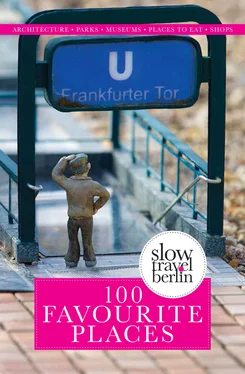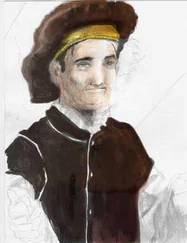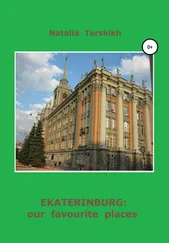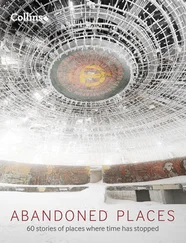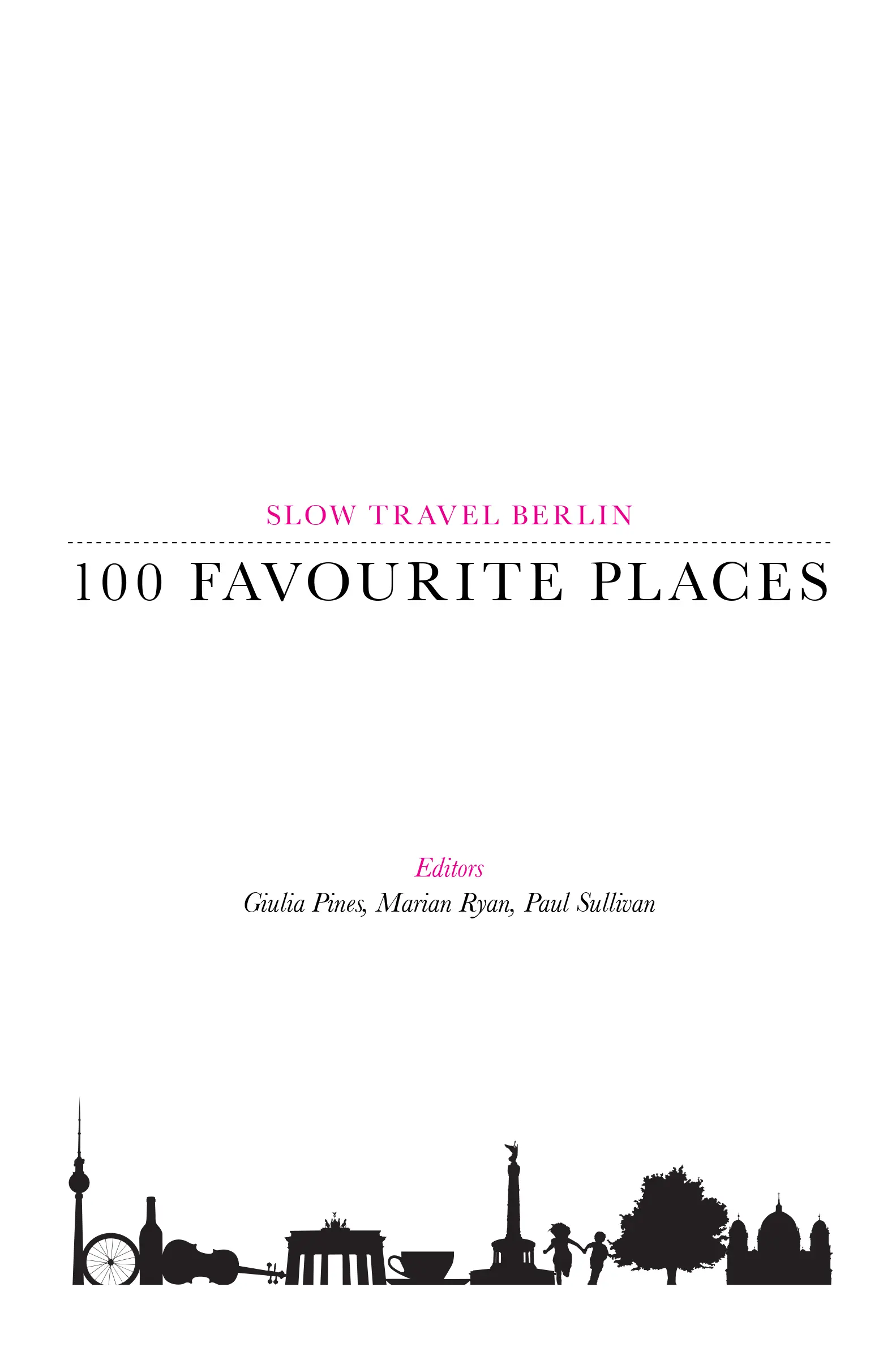
Book design by Emilia Ohberg
Maps by Katrin Hagen
Cover image: Modellpark Berlin-Brandenburg by Paul Sullivan
All rights reserved. This book or any portion thereof
may not be reproduced or used in any manner whatsoever
without the express written permission of the publisher
except for the use of brief quotations in a book review.
100 Favourite Places
Slow Travel Berlin
Published by: epubli GmbH, Berlin, www.epubli.de
Copyright: © 2013 Slow Travel Berlin
ISBN 978-3-8442-6963-5
www.slowtravelberlin.com | contact@slowtravelberlin.com
100 FAVOURITE PLACES
WARNING: NOT A CONVENTIONAL GUIDEBOOK!
Welcome to our favourite places! Instead of just highlighting Berlin’s hippest ‘hotspots’, we’ve taken a more considered and personal approach to bring you 100 special places, many of which would go unmentioned in a conventional guide. While we’ve included recommendations on cafés and restaurants, museums and monuments, parks and architecture, we’ve tried to resist the temptation to compress the city into a set of catchy soundbites and glossy venues in favour of giving each place room to breathe and shine.
As long-term residents of Berlin, we’re still very much in thrall to this fascinating city. We aim to share our enthusiasm by providing a charming and inspirational city companion for visitors and residents alike. Our favourite places have been hand-picked by core members of the Slow Travel Berlin team and reflect our overall ethos of slow, sustainable travel: taking time to explore the fringes of the city, discovering lesser-known delights and supporting smaller, independent businesses.
We’ve written each profile from first-hand experience and taken our own photographs. We’ve designed the book ourselves and worked with a local illustrator to create hand-drawn maps, all with the aim of generating a unique, intimate view of the city. And, to echo Berlin itself, we’ve eschewed a predictable ordering scheme in favour of offering unexpected juxtapositions. Each turn of the page will reveal a new surprise; we hope you’ll enjoy our favourite places as much as we do.
This ebook is the interactive complementary version of our printed book. To use it best, we have created a system where you can click directly on any map reference (located at the bottom of each place profile) and be taken to the corresponding map. Similarly, clicking on the place names associated with the maps will take you directly to that place profile. This means that you can use the map during walks around the city to see which of our places might be nearby, and easily and directly find more specific information about them. Of course, you can also use the "search" function to look for specific place names or keywords.
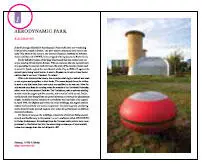
|
Parks & Gardens |
|
Architectural Highlights |
|
Museums & Galleries |
|
Historical Sites |
|
Reflection & Remembrance |
|
Food & Drink |
|
Interesting Shops |
|
Family Fun |
01
Aerodynamic Park
ADLERSHOF
A stroll through Adlershof’s Aerodynamic Park could leave you wondering if aliens have landed in Berlin. The site’s bizarre structures were built in the early ’30s, when it was home to the German Research Institute for Aviation. Active until the end of WWII, it was stripped of its equipment by Soviet forces.
It’s the dull silvery sheen of the large wind tunnel that first catches your eye as you head up Brook-Taylor-Strasse. With an entrance like the opened hatch of a spaceship, its concrete shell still bears the grain of the wooden planks used to mould it. Inside, a giant fan once blasted winds of up to 200km/h against the aircraft parts being tested inside. A note in Russian on its side advises Soviet soldiers that it has been ‘Checked. No mines.’
With twin chimney-like towers, the soundproofed engine testbed was used to test engines and propellers to their limits. The towers helped direct the airflow in such a way that noise from tests inside was muffled on its way out. Now the only sounds come from the meeting center for students of the Humboldt University, which owns the Aerodynamic Park site. The Trudelturm, with a staircase winding its way round its pepper-pot-like exterior, was a vertical wind tunnel. Inside, model aircraft were dropped into an upward airstream to research the phenomenon of spin. Its bullet-scarred concrete is a remainder and reminder of its capture in April 1945. Set slightly apart from the other buildings, the engine altitude testbed looks positively normal by comparison. Beneath its gently undulating series of barrel roofs, aircraft engines were tested for performance at different simulated altitudes.
On the lawn between the buildings, collections of mini red flying saucers screech and burble away to themselves – an art installation called AIR BORNE,by Stefan Krüskemper. Recordings from the German radio archive have been processed by Karlheinz Essl into the unnerving soundscape of otherworldly noises that emerge from the red ellipsoids. RC
Newtonstr., 12489; S Adlershof
Map: Overview G4

02
Museum of Things
KREUZBERG
The Museum of Things, tucked inside an old factory, holds a treasury of everyday objects: a temple of the apparently mundane. It houses the archives of the Deutscher Werkbund : a federation of craftsmen, architects, designers and manufacturers formed in 1907 which, a decade before the more famous Bauhaus movement, advocated a union of design and industrial production to create attractive, replicable, quality goods that were accessible to a broad spectrum of society.
In the museum’s sleek, minimalist space, glass-fronted cabinets hold an orderly assortment of objects from these archives, as well as from everyday design culture, grouped by themes such as ‘yellow and black’ and ‘functional vs. kitsch’, rather than by era, to provide them with new contexts. The workaday objects you’ll find run the gamut from silver spoons to hair dryers, Star Wars collectibles to GDR-era toiletries.
The thousands of objects on display have been selected to exemplify material culture from the early 20th century up to the present. The tidy assemblage, like a well-controlled yard sale, can be enjoyed for its sheer profusion of strange stuff – schlock like slippers made to look like penises and a decorative pillow embroidered with Hitler’s visage. It can also be browsed as a history of influence, illustrating how the Werkbund ’s cardinal principles came to dominate German industrial design. Particularly impressive is the ’20s-era Frankfurt Kitchen: this compact contraption, whose cupboards disappear inside one another and whose countertops fold down to reveal appliances, is a space-saving marvel, a triumph of the federation’s credo, ‘function without ornament’.
The section on elektronische Dinge (electronic things) brings visitors up to the present for a look at function and design in today’s gadgets (laptops, mobile phones) – and shows how the Werkbund ’s ideas about form, materials, production and accessibility presaged the evolution of the MacBook well before Steve Jobs ever wielded a laser pointer. TE
Читать дальше
